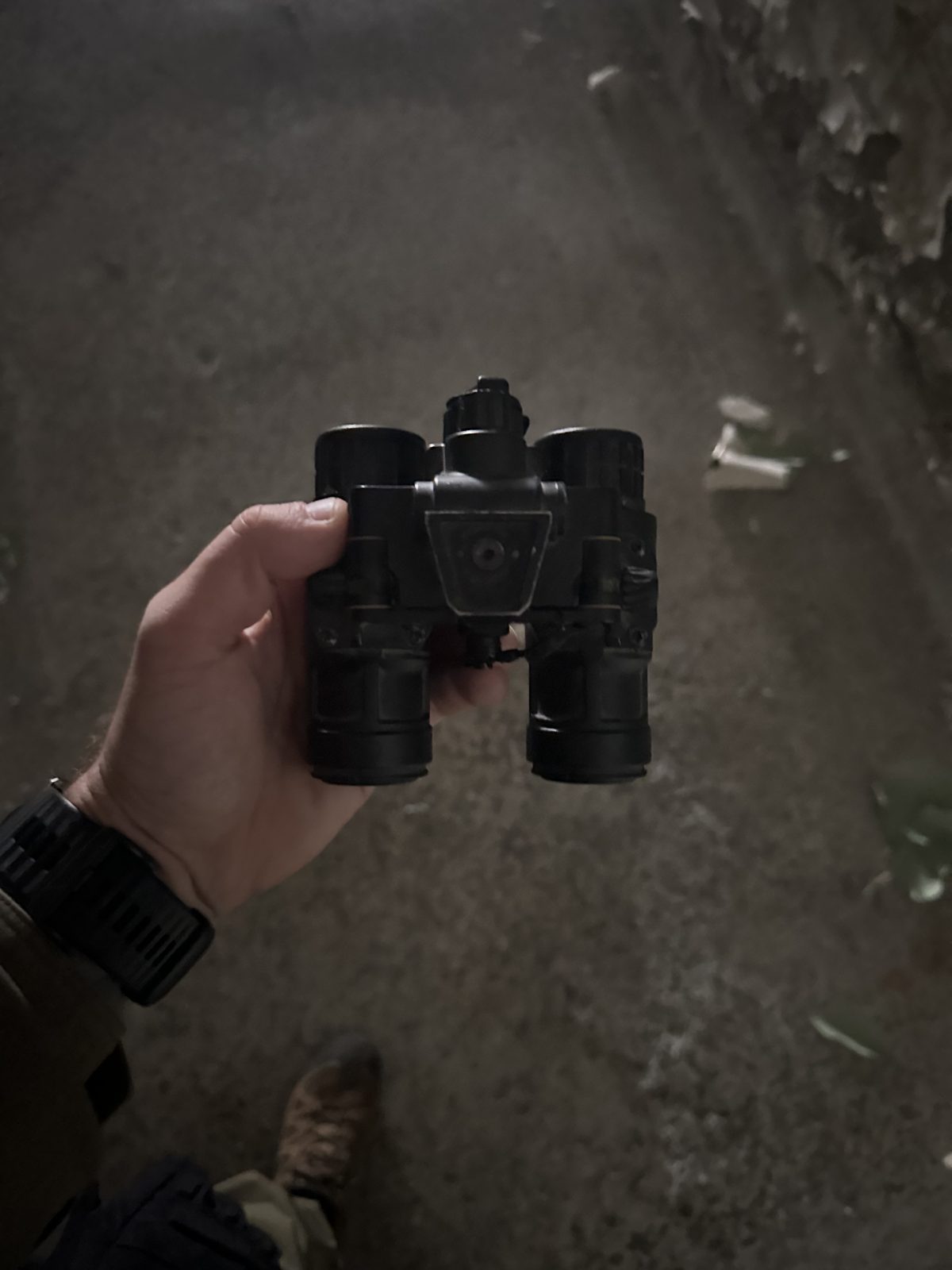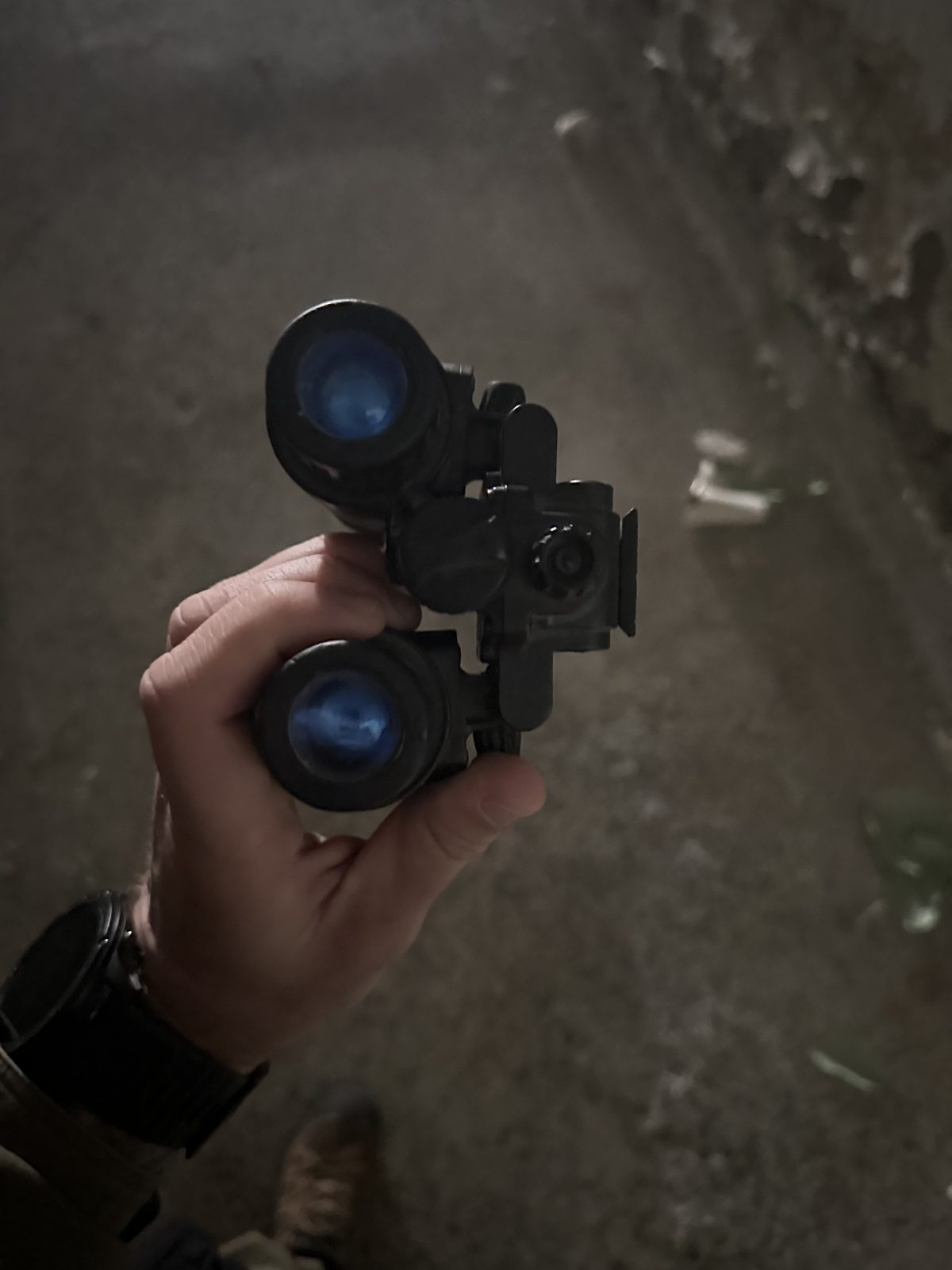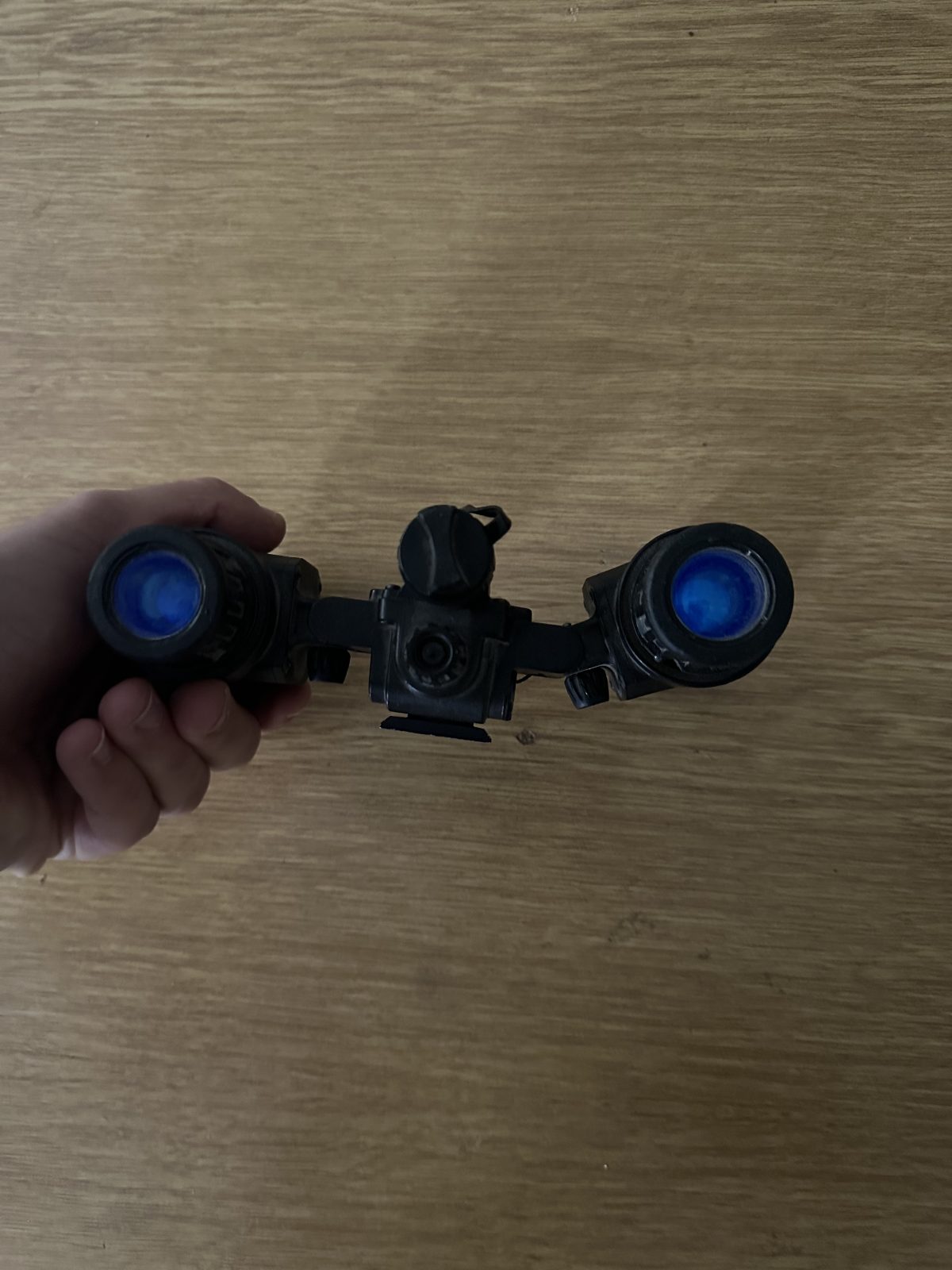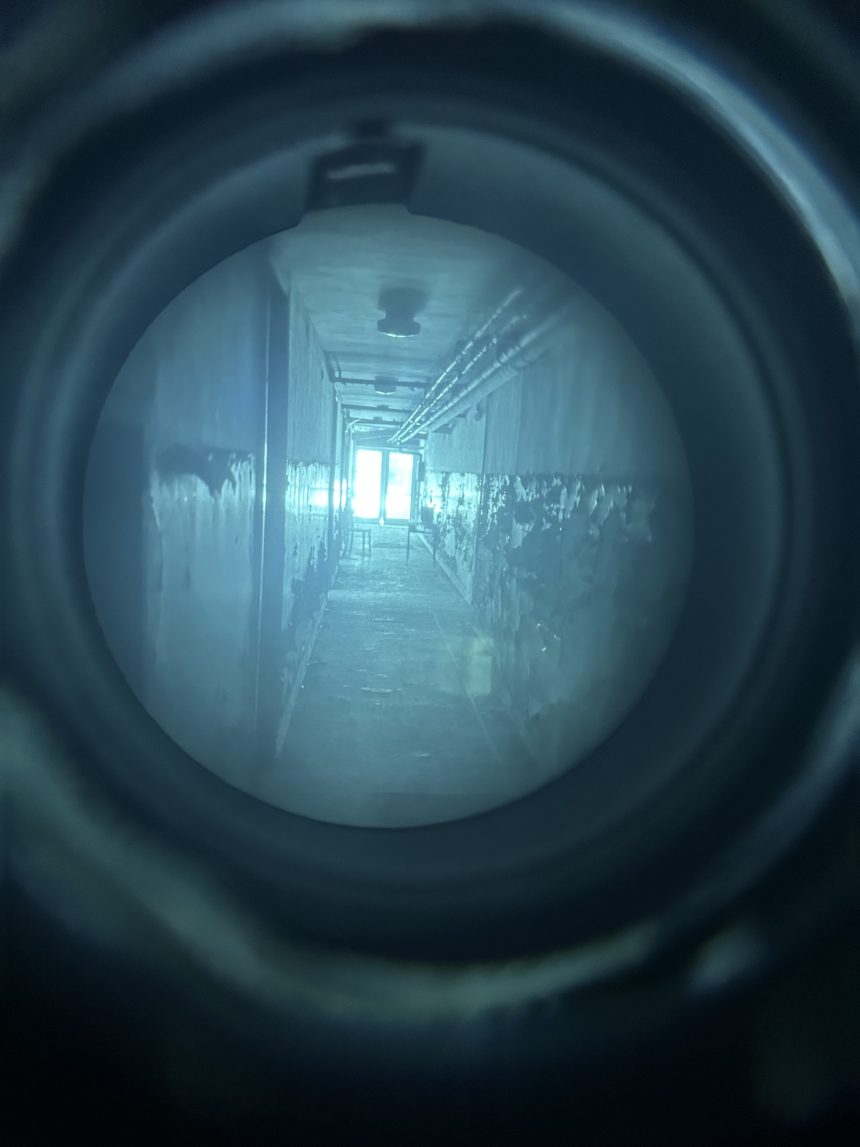When I first got my hands on the L3Harris Binocular Night Vision Device (BNVD), also referred to by its military name AN/PVS-31A, I immediately noticed its compact and lightweight design. This Generation III, high-performance, white phosphor goggle quickly stands out because of its dual-tube setup. Having used single-tube goggles in the past, I can tell you that this system offers a level of situational awareness that’s simply unmatched.
What makes this device even more impressive is how it was developed with input directly from Special Forces operators. The focus was on improving system resolution, reducing head-borne weight, and optimizing the center of gravity. That focus pays off in the field. With its ergonomic, low-profile design, the BNVD is comfortable to wear for long periods without feeling cumbersome or heavy.

The standard diopter lens has a rating of -0.5, which means it’s designed to focus at a distance of about 2 meters. For those with good vision, this is the sweet spot. If you’re using corrective lenses, the recommendation is to stick with the -0.5 diopter. But if you’re going without your glasses, simply subtract 0.5 from your prescription to find the appropriate diopter for your vision.
It’s no surprise that the L3Harris BNVD is one of the most sought-after pieces of night vision equipment currently available. Originally adopted by USSOCOM, it’s been used by U.S. Special Operations Forces and allied units for several years. However, it hasn’t always been readily available for civilians—until now.
One of the standout features of this system is its weight—or lack thereof. The L3Harris BNVD is one of the lightest dual-tube night vision goggles on the market, thanks in part to its advanced optical lens assemblies. These lenses are designed to maximize the performance of the unfilmed 2376+ FOM (Figure of Merit) White Phosphor image intensifier tubes. The goggles come equipped with both an onboard AA battery and an external power connector, giving you the option of using an external power source for extended operations.

Each BNVD unit ships with a 4x AA Cold Weather Battery Pack and a 25-inch BNVS power cable, backed by a full factory warranty and customer support. These aren’t contract overruns or used items; they’re brand-new and available as regular stock. But, as you can imagine, demand is through the roof.
Now, let’s talk performance. The AN/PVS-31A was specifically designed to replace the legacy AN/PVS-15 in the USSOCOM inventory. Weighing in at just under a pound, this dual-tube goggle is the smallest and lightest on the market. It’s nearly as light as some monocular systems but offers superior capabilities. The BNVD’s latest Gen3 Unfilmed image intensifier tubes deliver crystal-clear clarity and resolution, which is vital for situational awareness in low-light environments.
One of the most convenient features of this device is its variable gain capability. You can easily adjust the brightness of your image, depending on the conditions, by rotating the power button. This same button also turns the system on and off when held for two seconds, and all the controls are designed for ease of use, even when you’re wearing gloves.
Unlike some night vision devices, the AN/PVS-31A doesn’t have an infrared illuminator. Special Operations personnel requested this exclusion because of the limited functionality and the added weight it would bring to the system.
When it comes to power, the BNVD can run off a single onboard AA battery, but it also works with a remote battery pack that you can mount on your helmet. This not only extends the operational time but also serves as a counterweight, balancing out the system nicely. The remote battery pack includes built-in dual infrared strobe lights for personnel identification, which can be activated via a small switch on the battery housing.
One cool feature that sets the AN/PVS-31A apart is its independently pivoting tubes. This allows you to run the device in binocular mode for depth perception and increased ease when navigating terrain or using various tools. But, if the situation calls for it, you can switch to a monocular configuration, making it easier to transition between different lighting conditions. The tubes can even be pivoted against your helmet when the device is stowed, reducing the risk of it catching on objects.

If you’re planning on purchasing this night vision device, just be aware of the legal limitations. Exporting these devices or even allowing non-U.S. citizens to use them, even on U.S. soil, is strictly prohibited by the ITAR (International Traffic in Arms Regulations). Failing to comply with these regulations can result in significant fines or prison time, so it’s something to keep in mind.
In summary, the L3Harris AN/PVS-31A BNVD is a game-changer for night vision technology, combining lightweight design, cutting-edge performance, and user-focused features. Whether you’re in the field or simply prepping for a mission, this device has the versatility and reliability you need.
Specifications
| Manufacturer | L3Harris Technologies |
|---|---|
| Dimensions | 4.7 in. L x 4.2 in. W x 3.4 in. H |
| Weight | < 450 g (0.99 lb.) with AA Lithium battery installed (no accessories) |
| Finish | Matte Black, Corrosion Resistant |
| Battery Type | One (1) AA Battery (On-Board), or Four (4) AA Batteries (Remote) |
| Battery Life | ≥ 8 hrs. on (1) AA Lithium battery (avg. 16 hrs. at 25 °C (77 °F) |
| Waterproof | 66 ft. immersion for 2 hrs |
| Warranty | TNVC 10-Year Warranty |
| OPTICAL | ———————————————————— |
| Generation | Gen3 U.S. L3Harris |
| Tube | 18mm MX-11769 Variable Gain |
| Minimum Figure of Merit (SNR x lp/mm) | 2376 |
| Film | Unfilmed |
| Gate | Auto |
| Gain | Adjustable/ Variable |
| Magnification | 1X |
| FOV | 40° ± 2° deg. (circular) |
| Objective Focus | 18 in. (45 cm ±3 cm) to infinity |
| Eyepiece Diopter | -0.5 ±0.1 (factory setting) adjustable from +2.0 to -2.0 with optional diopter lenses |
| INCLUDES | AN/PVS-31A BNVD Goggle, Padded MOLLE Carry Pouch, Rubber Eye Cups, Sacrificial Windows, Wilcox Amber Filters, Remote Battery Pack, Remote Power Cable, Anti Fog Wipes, Lens Covers, Operator’s Manual |





